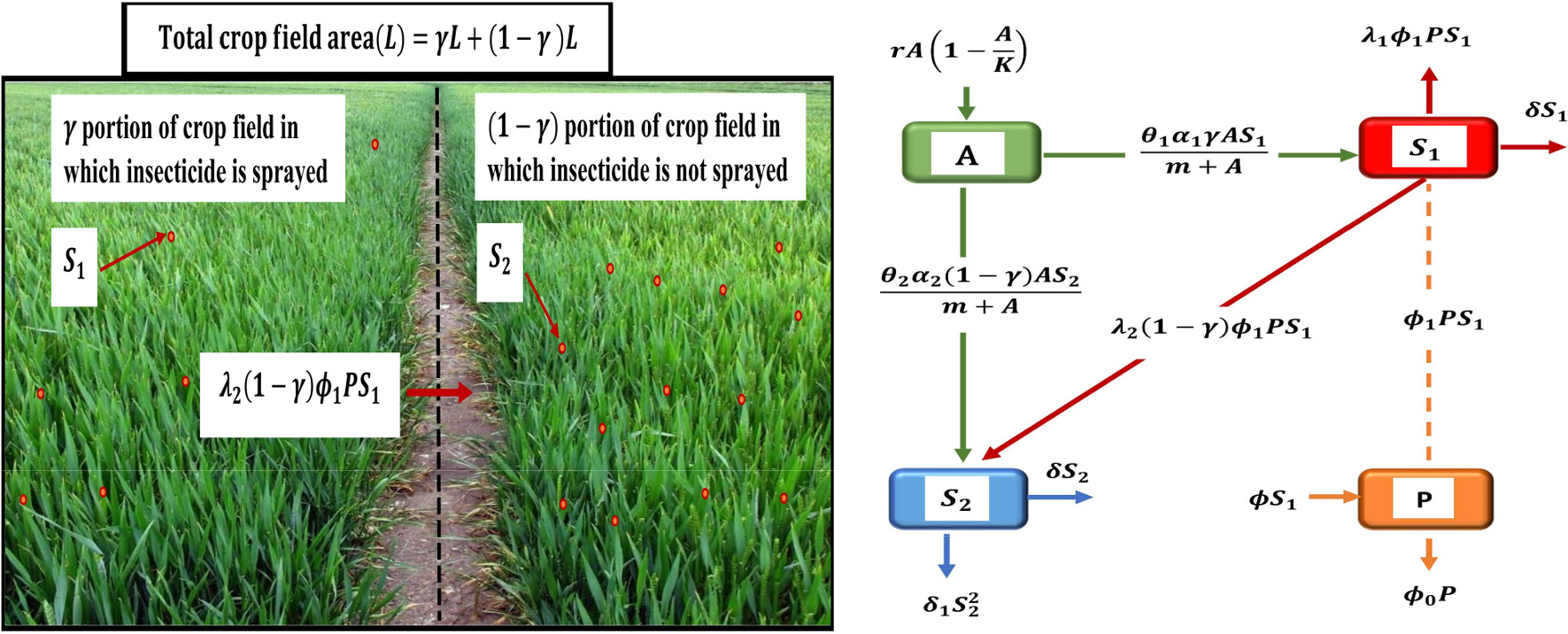https://doi.org/10.1140/epjp/s13360-024-05013-5
Regular Article
Is spraying insecticide in partial agriculture field more effective? A modeling study
Department of Mathematics, Institute of Science, Banaras Hindu University, 221005, Varanasi, Uttar Pradesh, India
Received:
5
December
2023
Accepted:
17
February
2024
Published online:
4
March
2024
The increasing population combined with crop losses caused by insects has placed immense pressure on the world’s food supply. In order to protect crops and control insects, farmers spray chemical insecticides. However, excessive spraying of insecticides results residues in crop yield and kills crop-friendly insects too, since blanket spraying may not ensure maximum crop yield, while spot spraying is both time-consuming and labor-intensive. Therefore in this study, we formulate a novel mathematical model to assess the effects of spraying of insecticide in the partial crop field on total crop production. To gain insights into the long-term behavior of the formulated model system, we employ the qualitative theory of differential equations. This research determines the range of crop consumption rate of insects in the insecticide-free region for which the developed system exhibits bistability behavior. We have also determined the proportion of crop field that should be allocated for the spraying of insecticides to achieve maximum crop yield. Furthermore, we present a comprehensive analysis of the model system’s behavior in both deterministic and stochastic environments, demonstrating multiple bifurcations and validating the analytical results through substantial numerical simulations.
Copyright comment Springer Nature or its licensor (e.g. a society or other partner) holds exclusive rights to this article under a publishing agreement with the author(s) or other rightsholder(s); author self-archiving of the accepted manuscript version of this article is solely governed by the terms of such publishing agreement and applicable law.
© The Author(s), under exclusive licence to Società Italiana di Fisica and Springer-Verlag GmbH Germany, part of Springer Nature 2024. Springer Nature or its licensor (e.g. a society or other partner) holds exclusive rights to this article under a publishing agreement with the author(s) or other rightsholder(s); author self-archiving of the accepted manuscript version of this article is solely governed by the terms of such publishing agreement and applicable law.





